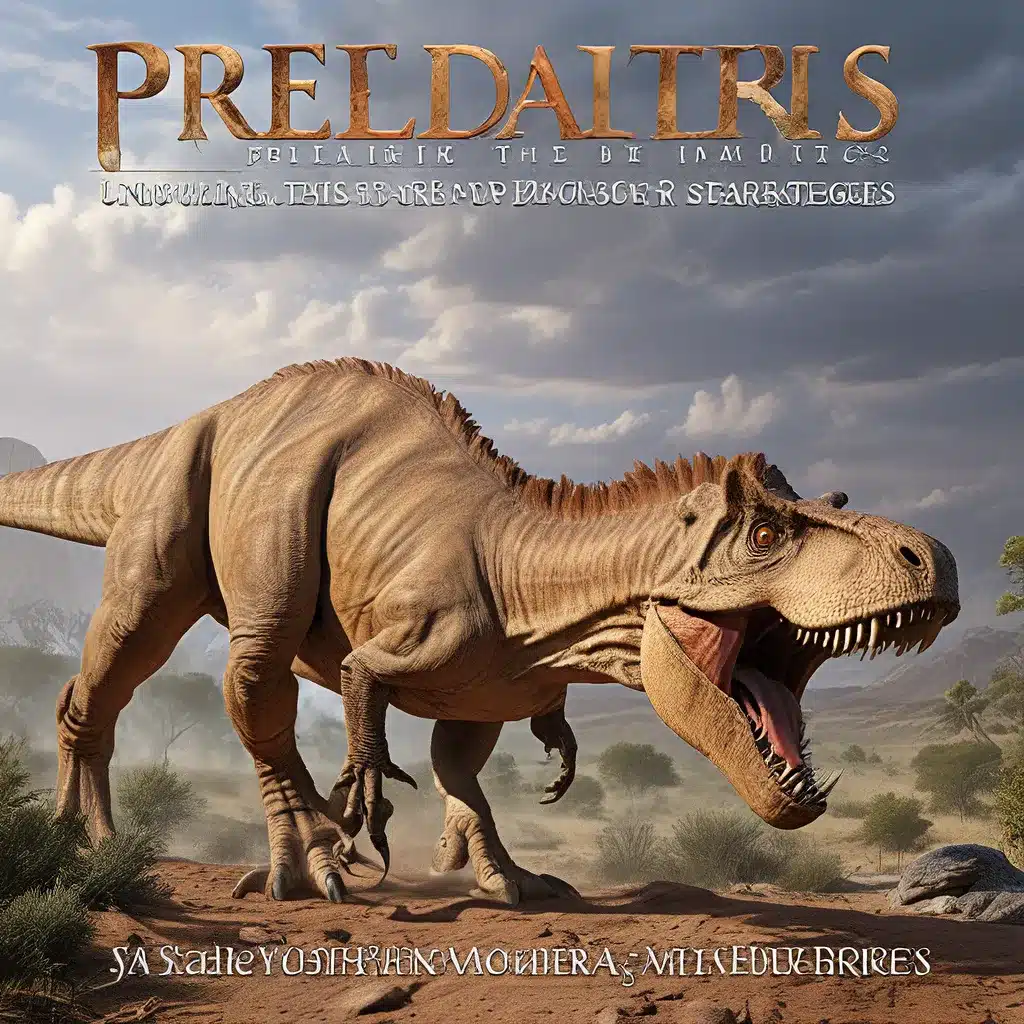
In the vast expanse of Earth’s ancient past, the reign of the dinosaurs stands as a captivating and enigmatic chapter in the annals of life. These prehistoric behemoths were not merely lumbering giants, but formidable predators whose hunting strategies continue to intrigue and confound modern researchers. As we delve deeper into the mysteries of these ancient reptiles, new insights are emerging that shed light on the complex and often brutal world they inhabited.
Decoding Dinosaur Hunting Tactics
One of the key aspects of understanding dinosaur behavior is analyzing their hunting strategies. Recent archaeological discoveries and advancements in paleontology have offered a glimpse into the intricate methods these apex predators employed to capture their prey.
Turok, the popular video game franchise, has long been a source of fascination for dinosaur enthusiasts, providing a virtual playground for exploring the hunting prowess of these prehistoric beasts. While the game’s depiction of dinosaur behavior may not always be entirely accurate, it does offer a glimpse into the strategic thinking required to survive in a world teeming with these formidable hunters.
One of the key lessons from Turok is the importance of stealth and strategy over brute force. Rather than relying solely on firepower, the game encourages players to carefully assess their environment and employ tactics like using the environment to their advantage, luring predators into traps, and silently picking off sentries to avoid alerting the entire pack. This approach mirrors the hunting strategies that paleontologists believe many dinosaur species employed in their pursuit of prey.
The Cunning Raptor: A Case Study
The raptor, a group of small to medium-sized theropod dinosaurs, has long been a subject of fascination for both scientists and the general public. These agile and intelligent predators, exemplified by the infamous Utahraptor, were known for their pack-hunting behaviors and lethal claw strikes.
Recent excavations and fossil analyses have revealed fascinating insights into the hunting strategies of these prehistoric predators. Paleontologists have discovered evidence suggesting that raptors employed a coordinated attack, with individual members of the pack distracting and maneuvering their prey, while others moved in for the kill. This sophisticated hunting behavior, coupled with their keen senses and agility, made raptors formidable opponents for even the largest herbivores.
Moreover, some species of raptors, such as the acid-spitting variety encountered in Turok, appear to have evolved specialized adaptations to further enhance their hunting prowess. The ability to spit corrosive acid at their targets not only served as a defensive mechanism but also increased their chances of successfully subduing their prey.
Navigating the Jurassic Landscape
Hunting strategies, however, were not the only factors that influenced the success of dinosaur predators. The diverse and often treacherous environments in which they thrived also played a crucial role in shaping their hunting behaviors.
Turok’s game world, for instance, presented players with a varied landscape teeming with different species of dinosaurs, each with their own unique adaptations and hunting preferences. From the swift and agile raptors that prowled the undergrowth, to the towering Tyrannosaurus Rex that dominated the open plains, the game’s bestiary offered a glimpse into the complex ecosystem of the prehistoric world.
Navigating this diverse and treacherous environment required strategic thinking and situational awareness. Players had to carefully evaluate their surroundings, anticipate the movements of their prey, and utilize the terrain to their advantage, whether it was luring predators into traps, using stealth to approach unsuspecting targets, or leveraging the strengths of different weapon types against specific dinosaur species.
The Enduring Mysteries of Dinosaur Hunting
As we continue to delve into the captivating world of dinosaur paleontology, new discoveries and technological advancements are unlocking even more secrets about the hunting strategies and behavioral patterns of these prehistoric giants.
Ongoing research and excavations in various archaeological sites around the world are unearthing a wealth of information about the complex social structures, communication methods, and specialized adaptations that allowed certain dinosaur species to thrive as apex predators.
Moreover, the study of dinosaur tracks and fossilized prey remains is providing valuable insights into the hunting techniques employed by these formidable creatures, shedding light on the intricate dance of predator and prey that unfolded in the Mesozoic era.
As we continue to unravel the mysteries of the prehistoric world, the study of dinosaur hunting strategies remains a fascinating and ever-evolving field of exploration. By piecing together the clues and evidence left behind by these enigmatic giants, we can gain a deeper understanding of the challenges they faced, the adaptations they developed, and the enduring legacy they have left on our planet.
For more insights into the ancient civilizations and their fascinating histories, be sure to explore our other articles on this website.


